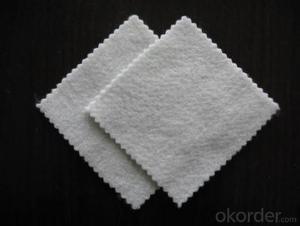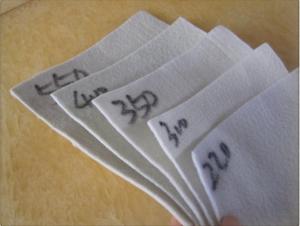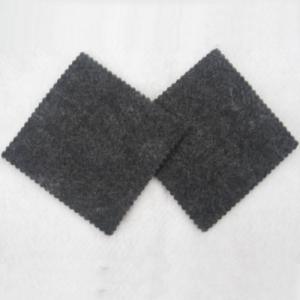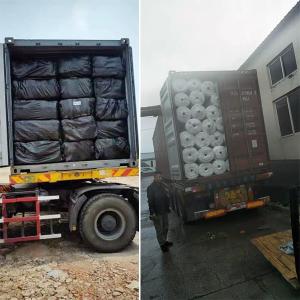Needle Punched Nonwoven Geotextile for River Construction
- Loading Port:
- Qingdao
- Payment Terms:
- TT or LC
- Min Order Qty:
- 20000 m²
- Supply Capability:
- 1500000 m²/month
OKorder Service Pledge
OKorder Financial Service
You Might Also Like
Product Discription:
OKorder is offering high quality Needle Punched Nonwoven Geotextiles for River Construction at great prices with worldwide shipping.
Our Geotextiles are available in a wide range of types and dimensions. Our supplier is a world-class manufacturer and our products are utilized
the world over, with OKorder annually supplying a full range of products to European, North American and Asian markets.
We provide quotations within 24 hours of receiving an inquiry and guarantee a competitive price.
Product Applications:
OKorder's Needle Punched Nonwoven Geotextile for River Construction and related products have many applications and currently
support many civil engineering applications including roads, airfields, railroads, embankments, retaining structures, reservoirs, canals, dams,
bank protection, coastal engineering and construction site silt fences or geotubes.
Product Advantages:
OKorder's Geotextiles are made from polypropylene staple fibers on cross-laying and needle punch equipment.
Our advanced production methods result in Geotextiles that are very high strength, have excellent elongation and high biological tolerances.
Main Product Features:
· Acid and alkali resistant
· Erosion aging resistant
· Excellent filtration
· Easy installation
· Low cost
Product Specifications:
Material: PP / PET
Weight: 100g/m² – 1500g/m²
Length: 50m – 100m/roll (Per request)
Width: 1m – 8m
Certification: CE / ISO9001
Color: Black, white, grey
Manufacturing method: Nonwoven / Woven


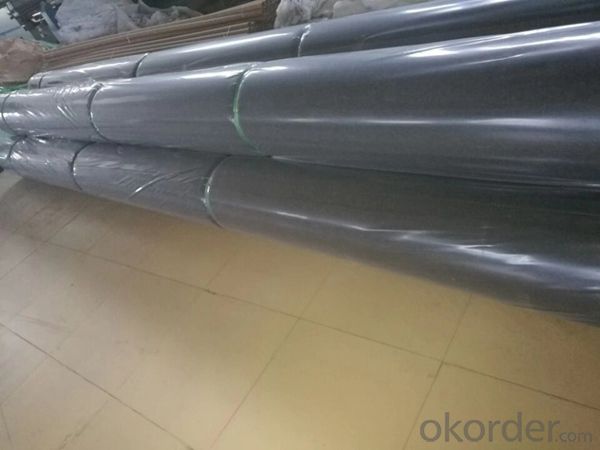
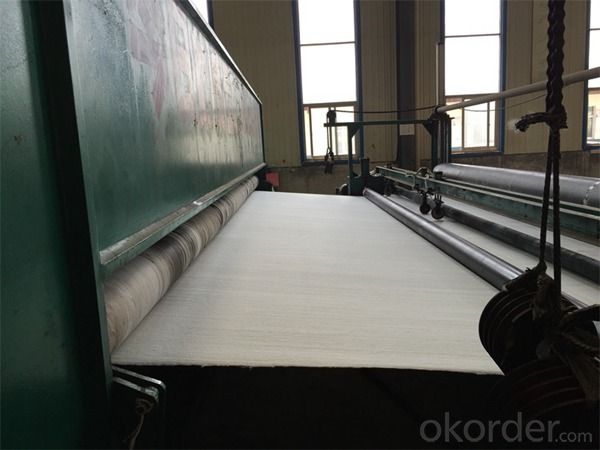
FAQ:
Q1: Why buy Materials & Equipment from OKorder.com?
A1: All products offered by OKorder.com are carefully selected from China's most reliable manufacturing enterprises. Through its ISO certifications, OKorder.com adheres to the highest standards and a commitment to supply chain safety and customer satisfaction.
Q2: How do we guarantee the quality of our products?
A2: We have established an advanced quality management system which conducts strict quality tests at every step, from raw materials to the final product. At the same time, we provide extensive follow-up service assurances as required.
Q3: What are the differences between Nonwoven and Woven Geotextiles?
A3: Nonwoven Geotextiles are made of directionally or randomly orientated fibers, filaments or other elements, mechanically and/or thermally and/or adhesively bonded Woven Geotextiles are produced by interlacing two or more sets of yarns, fibers, filaments, tapes or other elements.
Q4: What are the differences between needlepunched and thermally bonded Nonwoven Geotextiles?
A4: Needlepunched Geotextiles are produced by entangling continuous or short fibers by needles. This so called mechanical bonding can be improved by additional thermal bonding thermally bonded Geotextiles are produced by bonding randomly or directionally orientated fibers using thermal treatment.
Q5: Which role does the polymer play in the properties of the Geotextile?
A5: Different polymers are used for the production of Geotextiles. The selection of a polymer depends mainly on properties like melting point, density, melt flow index and more that influence the different production processes. Usually the polymer is modified using additives and stabilizers in order to improve the characteristics. It is the final manufactured product that is of primary interest to the end user.
Q6: What is the difference between Geotextiles and Geosynthetics?
A6: Geosynthetics is the generic term for products where at least one component is made from a synthetic or natural polymer used in contact with soil and/or other materials in geotechnical and civil engineering applications. Geotextiles are planar, permeable, polymeric textile products and are one type of geosynthetics.
- Q:Can geotextiles be used in the construction of artificial ponds?
- Yes, geotextiles can be used in the construction of artificial ponds. Geotextiles are often used as a lining material for ponds to provide reinforcement, filtration, and separation between the soil and water. They help to prevent erosion, control soil movement, and improve overall stability of the pond structure.
- Q:Are geotextiles cost-effective?
- Yes, geotextiles are cost-effective. They offer numerous benefits such as erosion control, soil stabilization, and filtration, which can reduce the need for expensive repairs or replacements of infrastructure. Additionally, geotextiles are typically easy to install and require minimal maintenance, further contributing to their cost-effectiveness.
- Q:How are geotextiles used in geotechnical engineering?
- Geotextiles are commonly used in geotechnical engineering to provide reinforcement, filtration, separation, and drainage in various construction projects. These permeable fabrics are placed within soil or rock structures to enhance their performance, prevent soil erosion, improve stability, and control water flow. Geotextiles are especially useful in road construction, embankments, retaining walls, landfills, and coastal engineering, as they offer cost-effective solutions and contribute to the sustainability and longevity of these structures.
- Q:GB / T-2008 has this standard on staple geotextile? What is the exact name? Know what to say thank you!
- There is the national standard, full name "staple acupuncture non-woven geotextile"
- Q:What are the advantages of using geotextiles in agriculture?
- Geotextiles offer several advantages in agriculture. Firstly, they help in soil reinforcement and stabilization, preventing erosion and soil loss. Secondly, they can act as a barrier, controlling the movement of water, nutrients, and chemicals, thereby enhancing soil fertility and reducing the risk of groundwater contamination. Additionally, geotextiles promote better root development and plant growth by providing a stable and well-drained environment. Lastly, they contribute to weed control, reducing the need for herbicides and manual labor. Overall, geotextiles serve as an effective and sustainable solution in agriculture, improving soil health, crop yield, and environmental sustainability.
- Q:How are geotextiles tested for durability?
- Geotextiles are typically tested for durability through a variety of methods such as tensile strength tests, puncture resistance tests, abrasion tests, and exposure to environmental conditions such as UV radiation and moisture. These tests assess the ability of geotextiles to withstand the stresses and strains they may encounter in their intended applications and ensure their long-term performance.
- Q:250 grams of geotextile how much money a square
- Geotextile price is calculated by the index and thickness of the general GB 250g geotextile price of the market price of 2.5 yuan, the most accurate formula please consult Hongxiang Meng Xiangyu.
- Q:What are the advantages of using geotextiles in road construction?
- There are several advantages of using geotextiles in road construction. Firstly, geotextiles act as a barrier and prevent the mixing of different layers of the road, thereby improving the stability and performance of the road. Secondly, they provide reinforcement to the road structure, increasing its load-bearing capacity and reducing the likelihood of cracks or deformations. Additionally, geotextiles have excellent filtration and drainage properties, allowing water to drain efficiently, preventing waterlogging, and reducing the risk of erosion and damage to the road. Lastly, geotextiles can also help in reducing the maintenance needs and extending the lifespan of the road, making it a cost-effective solution in the long run.
- Q:Permeable geotextile how many square
- Geotextile with GB and non-standard, do not know how many grams you want, the price from a few hair to a few pieces have.
- Q:In the laying of composite geotextile water layer, what is wf115-0.2mm type
- I produce geotextile materials
1. Manufacturer Overview |
|
|---|---|
| Location | |
| Year Established | |
| Annual Output Value | |
| Main Markets | |
| Company Certifications | |
2. Manufacturer Certificates |
|
|---|---|
| a) Certification Name | |
| Range | |
| Reference | |
| Validity Period | |
3. Manufacturer Capability |
|
|---|---|
| a)Trade Capacity | |
| Nearest Port | |
| Export Percentage | |
| No.of Employees in Trade Department | |
| Language Spoken: | |
| b)Factory Information | |
| Factory Size: | |
| No. of Production Lines | |
| Contract Manufacturing | |
| Product Price Range | |
Send your message to us
Needle Punched Nonwoven Geotextile for River Construction
- Loading Port:
- Qingdao
- Payment Terms:
- TT or LC
- Min Order Qty:
- 20000 m²
- Supply Capability:
- 1500000 m²/month
OKorder Service Pledge
OKorder Financial Service
Similar products
New products
Hot products
Related keywords

